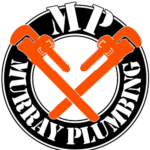Running toilets are a common yet often overlooked issue in many households, leading to significant water wastage and increased monthly water bills. Understanding how much water a running toilet can use, the causes of this problem, and the potential solutions is essential for homeowners aiming to conserve water and reduce costs. This article delves into the intricacies of running toilets, the impact of leaks on water consumption, and practical steps for rectifying these issues.
What is a Running Toilet and How Much Water Can it Waste?
Understanding Running Toilet Water Usage
A running toilet is characterized by continuous water flow into the toilet bowl after a flush, often due to a malfunctioning component within the toilet tank. This condition can lead to a leaky toilet, which significantly increases water usage. On average, a running toilet can waste up to 3 gallons of water per minute, translating into substantial water consumption over time. If left unaddressed, this can result in the loss of thousands of gallons of water each month, causing a noticeable spike in the monthly water bill.
Common Causes of a Running Toilet
Several factors can contribute to a running toilet, with the most frequent being a faulty flapper valve. The flapper valve is responsible for controlling the water flow from the toilet tank to the bowl during a flush. If it becomes worn or misaligned, it may not seal properly, resulting in continuous water running into the bowl. Other common causes include a malfunctioning fill valve, incorrect water level settings, or issues with the flush valve. Identifying the root cause of the problem is vital for effective resolution and water conservation.
Estimating Water Flow from a Running Toilet
Estimating the water flow from a running toilet can provide insight into the potential waste occurring in a household. Homeowners can utilize a water meter to determine how much water is being consumed. By recording the water meter reading before and after a specific time frame, one can calculate the gallons of water wasted due to the running toilet. This method not only reveals the extent of the issue but also serves as a motivating factor to address the leak promptly.
How Does a Toilet Leak Affect My Water Bill?
The Impact of a Leaky Toilet on Monthly Water Costs
The financial implications of a leaky toilet are often underestimated. A leaking toilet can lead to a high water bill, as the continuous flow of water contributes significantly to overall water consumption. Depending on the severity of the leak, it is possible for a single toilet to waste anywhere from hundreds to thousands of gallons a month. Consequently, homeowners may find themselves facing an unexpectedly high monthly water bill, which could have been avoided with timely maintenance and repairs.
Calculating Gallons of Water Wasted by a Toilet Leak
To calculate the gallons of water wasted due to a toilet leak, one must first determine the flow rate of the leak. For instance, if a toilet is leaking at a rate of 1 gallon per hour, it can waste approximately 24 gallons a day, amounting to 720 gallons a month. By understanding the flow rate and multiplying it by the number of hours in a month, homeowners can quantify the impact of the leak on their water bill, emphasizing the importance of prompt repairs.
Identifying Signs of a Toilet Leak
Recognizing the signs of a leaking toilet is crucial for preventing further water wastage. Common indicators include the sound of water running when the toilet is not in use, water pooling around the base of the toilet, or an inexplicable increase in the monthly water bill. Additionally, homeowners can perform a simple dye test by adding food coloring to the toilet tank. If the color seeps into the bowl without flushing, it indicates a leak, necessitating immediate attention to avoid further water consumption.
What Are the Different Types of Toilet Leaks?
Understanding the Flapper Valve and Its Role
The flapper valve plays a pivotal role in maintaining the proper functioning of a toilet. Located at the bottom of the toilet tank, it creates a seal that allows water to flow into the toilet bowl during a flush. If the flapper valve becomes worn or damaged, it may not close properly, resulting in a constant flow of water from the tank. This type of leak can easily go unnoticed, significantly contributing to water waste and increased bills.
Common Toilet Tank Issues Leading to Leaks
In addition to the flapper valve, various issues within the toilet tank can lead to leaks. Problems such as a malfunctioning fill valve or incorrect water level settings can result in water continuously overflowing into the bowl. Regular inspection of the toilet tank components can help identify these issues before they escalate, ensuring that the toilet operates efficiently and conserves water effectively.
How to Detect a Leaky Toilet Bowl
Detecting a leaky toilet bowl may require more effort than identifying issues within the tank. Homeowners should inspect the bowl for cracks and thoroughly examine the seal between the bowl and the floor. Additionally, a water meter can be employed to monitor water usage, signaling potential leaks if consumption unexpectedly increases. Ensuring that the toilet bowl remains leak-free is essential for preventing unnecessary water consumption and managing costs.
How Can I Fix a Constantly Running Toilet?
Steps to Troubleshoot a Running Toilet
Fixing a constantly running toilet begins with troubleshooting to identify the underlying issue. Homeowners should start by checking the flapper valve for signs of wear or misalignment. If the flapper appears to be the culprit, replacing it is typically an easy and cost-effective solution. Furthermore, checking the fill valve and adjusting the water level can also rectify the problem. Thoroughly inspecting these components can often resolve the issue of running water and restore normal toilet function.
When to Replace the Fill Valve
The fill valve is another critical component that may require replacement if it malfunctions. If adjusting the fill valve does not resolve the issue, or if it exhibits signs of wear, such as leaks or inconsistent water levels, it is advisable to replace it. A new fill valve can restore proper water flow and prevent excess water usage, ultimately leading to lower water costs.
DIY Solutions for Running Toilet Problems
Many homeowners can tackle running toilet issues with simple DIY solutions, reducing the need for professional intervention. By following step-by-step instructions available online, individuals can replace worn components such as the flapper valve or fill valve. Regular maintenance practices, such as cleaning the toilet tank and ensuring all components are functioning as intended, can also promote water conservation and minimize the risk of running toilets in the future.
How Can I Reduce Water Usage from My Toilet?
Upgrading to a Water-Efficient Toilet
One of the most effective ways to reduce water usage from a toilet is to upgrade to a water-efficient model. Modern toilets are designed to use significantly less water per flush compared to older models. For instance, many new toilets utilize as little as 1.28 gallons per flush, compared to older toilets that may use up to 3.5 gallons. This upgrade not only conserves water but can also lead to substantial savings on the monthly water bill.
Regular Maintenance Tips to Prevent Running Toilets
Regular maintenance is key to preventing running toilets and ensuring optimal water usage. Homeowners should routinely inspect their toilet components for wear and replace any faulty parts promptly. Additionally, maintaining proper water levels in the tank and conducting regular flush tests can help identify potential issues early on. Implementing these maintenance practices fosters a proactive approach to water conservation.
Understanding the Importance of Timely Repairs
Timely repairs are essential in minimizing water waste and managing water costs effectively. Ignoring a running toilet can lead to exacerbated issues, resulting in further water leaks and higher monthly bills. By addressing problems as they arise, homeowners can ensure their toilets function efficiently, reducing both water consumption and associated costs. Ultimately, investing in timely repairs is a vital aspect of responsible toilet use and water conservation.
How Murray Plumbing Inc Can Help: Understanding Water Waste and Costs of a Running Toilet
Murray Plumbing Inc offers invaluable assistance in understanding the impact of a running toilet on both water waste and costs. A toilet that is running can waste as much as 3 gallons per minute, leading to an alarming amount of water lost daily. This excessive water usage can significantly increase your monthly bills, with the cost of water potentially reaching $70 a month for just one toilet.
Moreover, as a toilet gets older, the likelihood of silent leaks increases. Murray Plumbing Inc can expertly address these issues by checking for leaky faucets and assessing the flow to the toilet, ultimately aiding in saving water and ensuring efficient water pressure. This comprehensive assessment allows homeowners to control water flow and mitigate unnecessary expenses.
Our specialized Toilet Scrooge™ service is designed to identify whether your toilet gets replaced or merely repaired. By checking your toilet for leaks and monitoring the toilet tank refilling process, we can help you avoid the sound of running water and its associated costs. Trust Murray Plumbing Inc to help you understand your water usage and make informed decisions.



